This seems to be the question on the mind of anyone who wants to go to Costa Rica. After all, it’s one of the more expensive places in Latin America and has a wide range of options for different kinds of travelers. So the cost depends on quite a few factors, all of which I’ll break down here to help you start planning the Costa Rica trip of your dreams:
Flights
This is where your Costa Rica trip cost will vary the most, as it depends on where you live and how far it is from you. If you are coming from a major US city, from which you can take a direct flight to San José, expect to pay around $500-700 round-trip.
Besides your location, the other major factor that influences flight prices to Costa Rica is the time of year. High season in Costa Rica is from December to March, which is when the prices are the highest. Also consider that even though June to August is technically low season (due to the heavy rain), it’s also during school vacation, so it can be just as pricey as traveling during high season due to the demand.
Accommodations
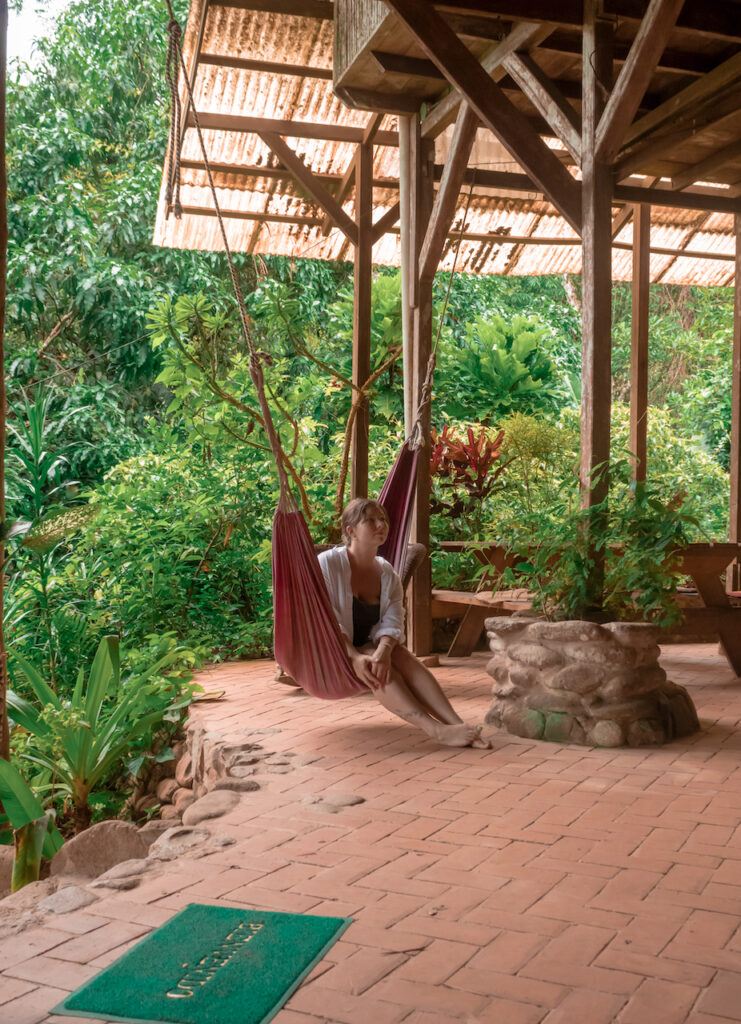
Everywhere I went in Costa Rica had a wide range of accommodations, all at vastly different price points. This makes travel here more accessible to a greater variety of people, which I love to see. From backpacker-friendly hostels to luxury stays, this is what you can expect to pay in Costa Rica for accommodations:
Budget-friendly hostels & Airbnbs
A lot of backpackers travel through Costa Rica, so you can expect to find affordable hostels and even Airbnbs in any major city or town. Generally, you can find dorms for as low as $16/night. Selina is a popular chain that has dorms and private rooms, with some of the best amenities you can find in a hostel, including free Wi-fi, social events, organized activities, volunteer opportunities, and coworking spaces. There are Selinas in La Fortuna, Manuel Antonio, and about a dozen other places in Costa Rica.
I found some cheap Airbnbs in Costa Rica, too. This one in Manuel Antonio was only $28/night, and I stayed in this one in Monteverde for only $38/night.
Whether you can score an affordable Airbnb for a more private experience or you’re looking for the cheapest hostel, budget travelers can expect to pay $16-40/night on accommodations in Costa Rica.
Mid-range hotels
Just as there are plenty of backpacker hostel options in Costa Rica, there are tons of mid-range hotels to choose from. I only stayed in one hotel, in La Fortuna, called FAS, which was on the cheaper end at $76/night. Throughout the country, you’ll find a range of hotels that have single or double rooms for $75-100/night.
As far as quality, I didn’t see much difference between the cheaper private hostel rooms or Airbnbs and the mid-range hotels. Had I traveled for a longer period of time and to more parts of the country, maybe this wouldn’t be the case, but it was an observation I made after visiting six different locations. If you want to save money, the hostels and Airbnbs are the way to go, as spending almost double for a hotel doesn’t always seem worth it.
Luxury resorts
This is where splurging might be worth your while, even if you only stay in a luxury hotel or resort for a couple of days. Since I mostly avoided the beaches with megaresorts, I didn’t get a fair picture of what they cost. However, there are quite a few hot springs resorts in La Fortuna, and I visited one during the day that looked like it would be incredible to stay at.
Popular luxury resorts like Tabacón Thermal Resort & Spa in La Fortuna start at $315/night. Depending on the room and when you visit, they can go up to almost $1,000/night! There are some beach resorts on the Osa Peninsula that cost even more than that.
Transportation
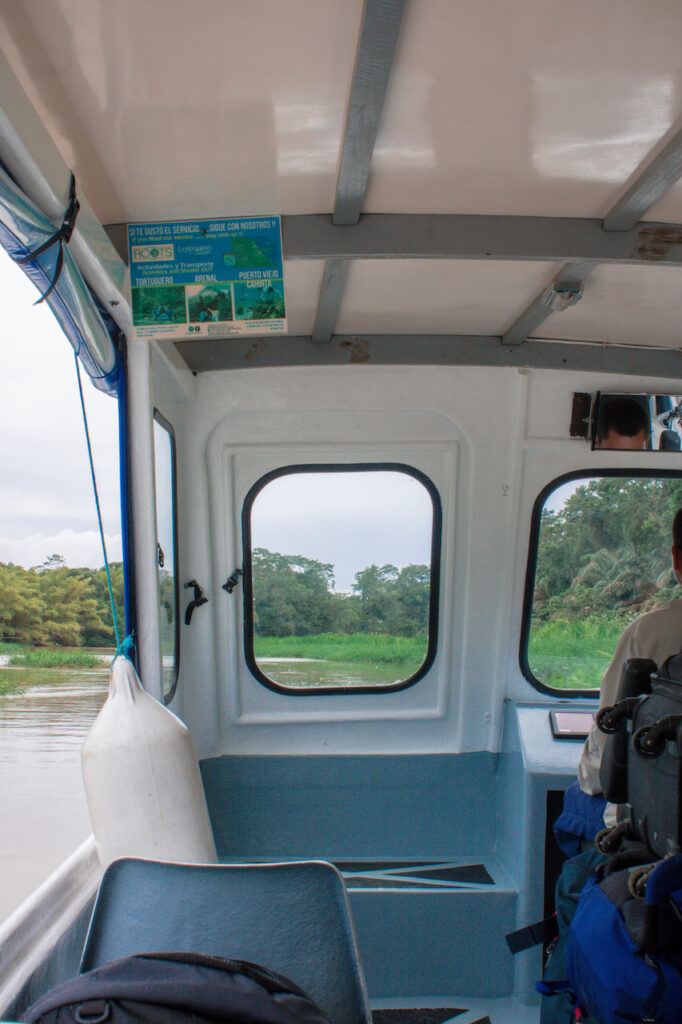
There are quite a few options for getting around Costa Rica, ranging from very cheap public buses to pricey rental cars. As a solo traveler, this was one of the toughest things to save money on, as some places were difficult to reach on public transportation, and it would have cost a fortune to rent a car without splitting the cost with anyone.
Here’s what I know about transportation costs in Costa Rica:
Public transportation
Overall, getting between cities and towns in Costa Rica via public transportation was very easy and extremely cheap. For example, the longest trip I took was from Tortuguero to San José, and it costed less than $10. The bus from San José to Uvita was also super cheap, at just $7.
I ran into a snag with public transportation, however. While getting between towns was easy via public transportation, going to specific beaches, waterfalls, and other attractions was tricky. Sometimes the local buses were late, sometimes they never showed up, and sometimes they just didn’t go anywhere close to where I wanted to go. Then there’s the possibility that you’ll get to your destination and then won’t be able to get back, as the buses can be unpredictable.
Overall for transportation for almost a month in Costa Rica, I spent around $200. I did splurge on one private shuttle that cost $45, but the rest of the time I took public buses, taxis, and boats.
If I were to go to Costa Rica on a budget again, I’d use public transportation to get from place to place but rent a car for a few days at a time in each.
Renting a car
If you are traveling with one or more people, renting a car might make a lot of sense. Although driving between destinations isn’t much faster than taking the bus, it grants you so much more freedom to check out lesser-known attractions and to get to them before the crowds and tours arrive.
Starting at $80 per day, renting a car can be astronomically expensive if you’re alone and traveling for more than a week or two. Plus, $80 is the absolute cheapest you’ll find a car rental here — and it’s likely that you’ll end up paying more, as the rental companies only have so many of the cheaper models on hand. On the high end, you could end up paying $120-150 per day, including gas.
Something to consider is how many spots you want to visit that are further off the beaten path. For example, there’s no need to rent a car in Manuel Antonio unless you are sure you want to check out the Nauyaca Waterfall, Dominical, or other small towns nearby. Considering that tours to those places can cost up to $100 per day, renting a car might make sense.
Food & Drinks
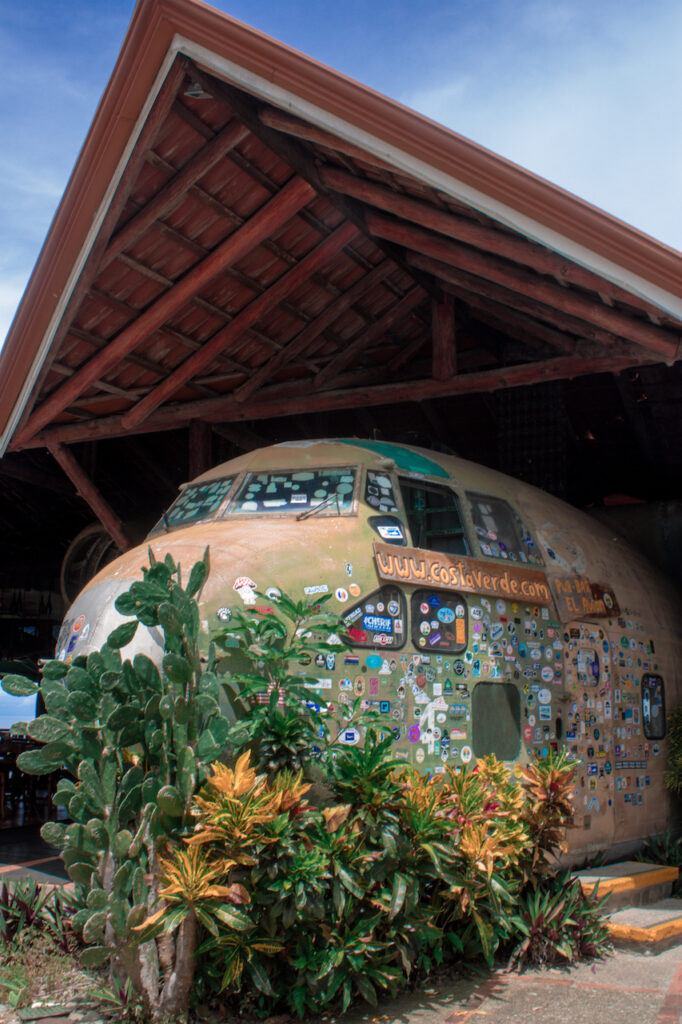
There’s quite a big range in restaurant prices in Costa Rica. Places that attract almost entirely tourists are obviously more expensive than local joints, but the overall quality of the food stays almost the same. I loved trying all the local dishes, especially the home-cooked casados and patacones.
Here’s what you can expect to pay in Costa Rica for food and drinks:
Mom-and-pop sodas
Sodas are small restaurants with similar menus that almost always include casados, plates that have rice and beans, a salad, some plantains, and a protein of your choice. This is where you’ll be able to get a taste of traditional Costa Rican cuisine, at an affordable price. Typically, a meal at a soda costs around $5-7. The casados that I tried were definitely filling, and made for the perfect post-hike or post-beach lunch.
You can find sodas anywhere in Costa Rica, and they’re always clearly marked as such. Another way to find them is to check out the local municipal market, where you will likely find a few. Markets also have cheap empanadas and other quick bites for around $2-3.
If you choose mostly sodas, you can spend as little as $20 per day on food. You can save even more if you choose a hostel that has free breakfast, hitting up sodas for lunch and dinner. Another great way to save money on food is to cook at your Airbnb or hostel if there’s a kitchen.
Restaurants & bars
Especially in very touristy areas like Manuel Antonio and La Fortuna, restaurants here can cost about the same as those in the US. Typically, entrees start around $10, with some offering breakfasts for just $5-8. Some places have a pricier menu, with meals around $15.
If you just chose these kinds of restaurants, you can expect to pay around $30-50 per day.
I noticed that drinks were also pricier than I expected. With the exception of the national beer, alcoholic beverages were around $5 each on the low end, $10 on the high end. That can definitely add up, so choosing not to drink alcohol is a great way to save money. I stuck with water (which you can drink from the tap in most places) and the occasional $1 coconut.
Activities & Park Entrance Fees
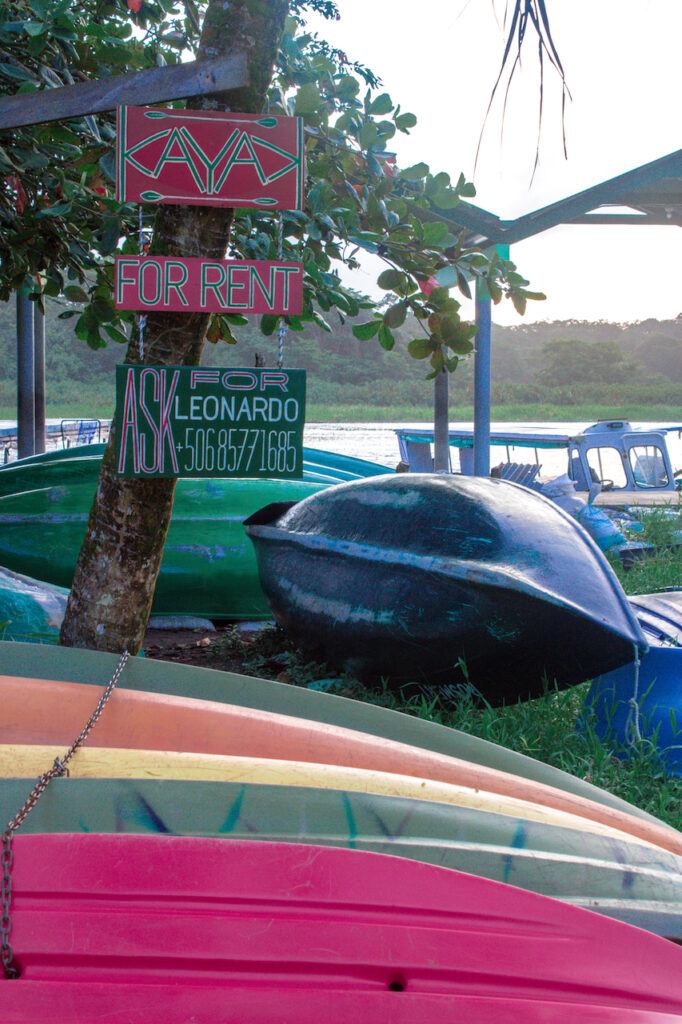
From kayaking to zip-lining to visiting a sloth sanctuary and everything in between, Costa Rica is the destination for exciting, nature-filled activities. With so many amazing things to do here, it can be easy to forget all about your budget and pack in as many activities as possible.
But from national park entrance fees to tours, there’s quite a wide range of prices, and saving money on these can be tricky. However, there are a few ways to do so.
Here’s an idea of activity and tour prices:
Park entrance fees
In Costa Rica, you can expect to pay $7-24 to access the national parks and ecological reserves. The cheapest national park I visited was Marino Ballena in Uvita, at $7 per day. The most expensive ones, including Manuel Antonio, are $16 per day. I also visited some ecological reserves, like the Monteverde Cloud Forest Reserve, which costs $20-24 per day.
Other adventure parks are pricier. These are popular in Monteverde and La Fortuna, and the cost depends on the activities you partake in. For example, I visited Selvatura Adventure Park and only did two activities, the Sloth Sanctuary tour and the hanging bridges hike, which costed $52 total. They have other packages that range from $52 to $169. This is a pretty typical price range for these types of parks.
Luckily, there are other activities that are more budget friendly. For example, the Spirogyra Butterfly Garden in San José is just $6. There are other museums, botanical gardens, and ecological parks that have fees anywhere from $5 to $20.
Full- and half-day tours
Especially if you don’t have a rental car, tours can be a great way to visit several different sites in one day without the pressure of figuring out transportation from place to place. In some cases, tours can also be more cost effective as well, as some destinations are quite expensive to get to via taxi. Plus, most of them include hotel pickup and drop-off and a meal as well.
Half-day tours start around $60 and full-day tours start around $100, depending on the area and the activities included. I did this full-day Arenal Volcano, hot springs, and La Fortuna Waterfall tour for $110, and it was completely worth it, because it included all the park entrance fees, lunch, and transportation. If I had visited all of these spots on my own, taking taxis and paying separate entrance fees, it would have cost far more.
I also did a jungle night tour in Manuel Antonio that cost $60 and lasted several hours. A more affordable tour I did was this San José food and sightseeing tour, which was $40.
Overall, the range is $40-120 for tours. Do your research beforehand to see if the price is worth it to you. For the ones I did, it absolutely was worth paying for a tour, because I didn’t have a rental car.
Miscellaneous Costs
There are some miscellaneous costs that you should also consider before you book your trip to Costa Rica. Some of these are optional and some are necessities, like travel insurance. Don’t miss out on planning for these expenses:
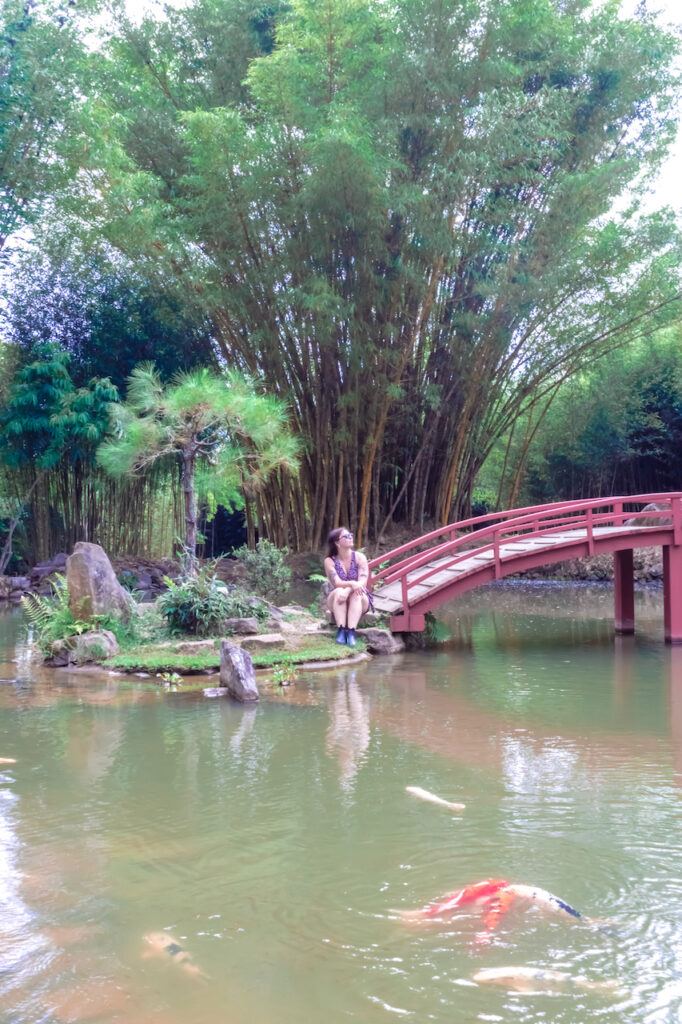
ATM fees
This definitely depends on your bank, but watch out for exorbitant ATM fees while in Costa Rica. In my experience, withdrawing cash from ATMs was a toss-up. The National Bank of Costa Rica seemed to have lower fees, charging around $2 on top of the fee my bank charges me per foreign withdrawal.
Sometimes ATMs will give you a screen that lays out the conversion rates if you’re withdrawing foreign currency, including a certain markup. You can either accept the conversion or deny it. If you deny it, the ATM doesn’t charge you the markup and you can save a bit of cash that way.
Another way to save on ATM fees is to simply do fewer withdrawals. Of course, this can be risky, because it means withdrawing larger amounts of cash, but if your bank charges you per foreign ATM withdrawal, it might be worth it.
Souvenirs
It’s hard to project how much anyone would like to spend on souvenirs, but chances are, you’ll want to bring back a little something to remember your time in Costa Rica. Souvenirs can be as simple as handmade bracelets that cost $1 each, or more elaborate goods, like art pieces or clothing. My advice is to set a budget for your souvenirs before you go, and then decide what to spend it on once you get there.
Avoid the typical souvenir shops that have insane prices and instead opt for smaller markets where you can buy from artisans. The Central Market in San José has a ton of great options, and the prices are decent. If you go to the Pacific coast, Dominical is an excellent place to find affordable souvenirs, as there’s a daily market there that sells handmade goods.
Travel insurance
This is a must when traveling anywhere, so it’s no surprise that travel insurance should definitely be included in your Costa Rica trip cost. Travel insurance costs vary based on the amount of time you’ll be traveling and the type of insurance you purchase. Plan to spend at least $30 on an insurance package, keeping in mind that it can cost up to $100 for a longer trip and more coverage.
For more information on choosing the right travel insurance for you, check out this comparison of World Nomads and SafetyWing.
Is Costa Rica Worth the Cost?
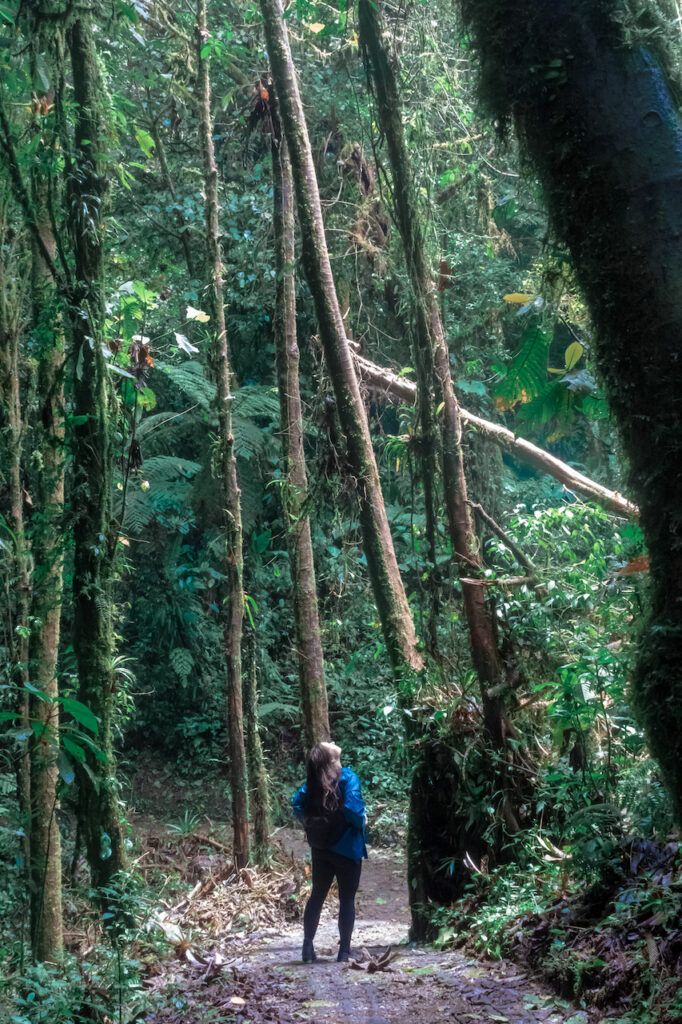
Costa Rica is the most expensive destination in Latin America I’ve visited. In some places, the prices were the same as, if not more than, in my home country of the United States. However, it was completely worth it, in my opinion. This country has so much to offer, with some of the most unreal landscapes I’ve seen in my life. I wouldn’t trade the experience for anything, and am already scheming on how to go back to visit the places I didn’t get to this time.
I think Costa Rica is pricey for backpackers and solo travelers, but still totally doable. Between finding affordable hostels and Airbnbs to dining in sodas most of the time, there are plenty of ways to save money.
Pin me for later:


Your Costa Rica trip cost will ultimately come down to the kind of travel you’re looking for, what level of luxury you want, how long you plan to stay, how many places you want to visit, the activities you want to participate in, and your transportation choices. I hope this guide helps you start planning your Costa Rica budget and makes choosing your accommodations, transportation, and other details a little bit easier.
Click to read more posts about
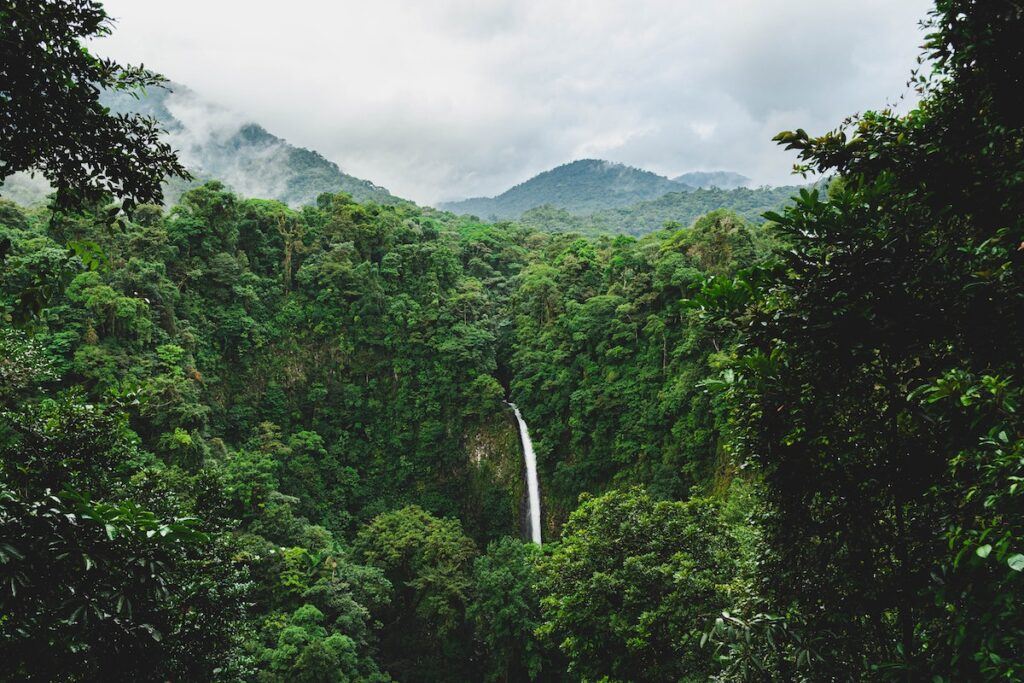
Costa Rica




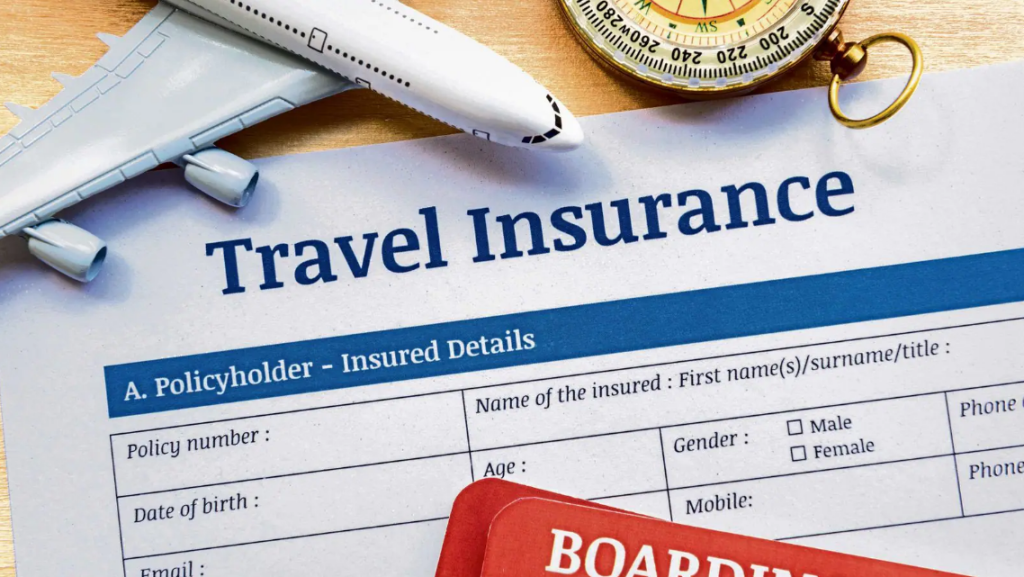

More Stories
Trends, Tools, and Tips for Success
Timeless Holiday Memories from the McConnell Marketing Team
30 Insults in Spanish You Should Know!